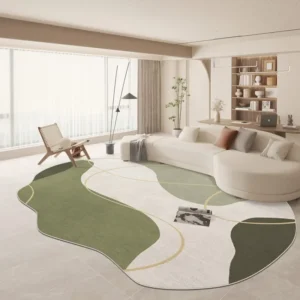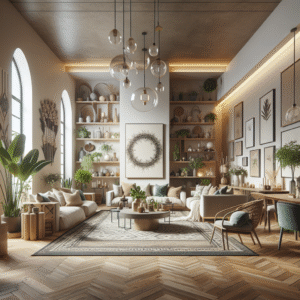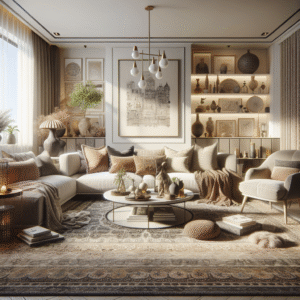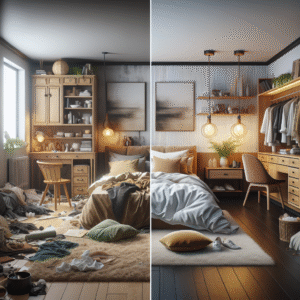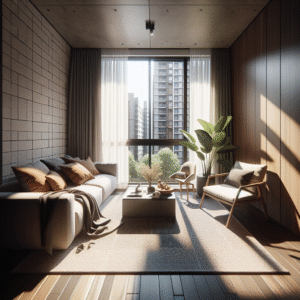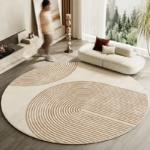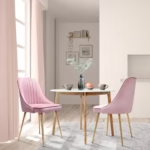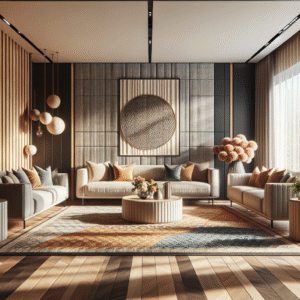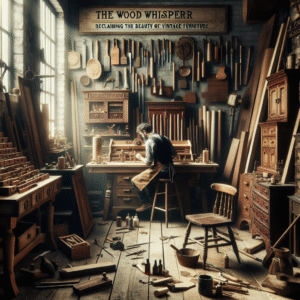Mastering the Art of Harmony: A Guide to Seamlessly Blending Diverse Design Styles in Your Space
Creating a space that resonates with your personality while also being harmonious might seem like a tall order. But here’s the good news—you can easily blend diverse design styles without losing that cohesive vibe. So, let’s explore how to embrace a rich tapestry of aesthetics to craft a charming ambiance.
Understanding Diverse Design Styles
To get started, it’s crucial to recognize the myriad styles that exist today. From minimalist chic to eclectic bohemian vibes, each style carries its own unique narrative. This understanding serves as the foundation for your creative journey.
Finding Common Ground
Think about it: even people from different backgrounds can find shared interests. Similarly, when blending design styles, it’s about finding common ground. Identify elements like color palettes, materials, or patterns that exist across the styles you’re considering. You might be surprised at how easily you can create a union of aesthetics just by recognizing these common threads.
Color is Your Best Friend
Colors make a statement. Harmonizing a vivid palette can give your space that unified look you crave. For example, if you’re blending Scandinavian and rustic styles, integrating earthy tones with cool whites can create a seamless connection. Try selecting three to four colors to use throughout the space. It can feel a bit like orchestrating a symphony—each hue playing its part to create a beautiful harmony.
Mixing Textures Like a Pro
How do you transform a flat space into a rich, inviting climate? Textures! Pair velvet cushions with wooden furniture, and you’ve got a combination that invites touch and interaction. Not only does this keep the visual interest alive, but it also adds an element of comfort—making people feel at home the minute they step in.
Scale and Proportion Matter!
Ever heard the saying “size matters”? Well, it definitely applies here! When blending styles, consider the scale of your furniture and decor. A giant mid-century modern couch might look fabulous, but if you couple it with dainty vintage side tables, you risk a look that feels disjointed. Balancing size and proportion can help maintain a cohesive look.
Personal Touches: Your Story, Your Space
Your space should tell your story. Incorporating personal items—like travel souvenirs or family heirlooms—not only adds character but also boasts the emotional resonance you seek in design. These pieces can act as bridges between different styles, creating a dialogue that feels entirely unique to you.
Creating Focal Points
Every room needs a star, right? Think of focal points as the anchors around which the rest of your design revolves. This could be an art piece or an accent wall that features distinctive design elements. By drawing attention to these focal points, you can create a robust connection between disparate styles, giving your space a sense of purpose.
Furniture Arrangement: The Dance of Design
Furniture arrangement is more like a dance than a straightforward exercise. Try to create pathways that feel natural; you wouldn’t want to feel trapped in your own living room! Arrange seating to encourage conversation, making it easy for family or friends to interact, regardless of the differing styles at play.
Accessorize Wisely
Ah, accessories—these little treasures can make or break a design. When you mix styles, find accessories that resonate with more than one aesthetic. A vintage lamp on a contemporary table, for instance, can pull together different design elements beautifully. So go out there and hunt for those pieces that simply “click”!
Lighting: The Unsung Hero
Ever noticed how lighting can change the mood of a space entirely? Play around with different types of lighting—from ambient to task lighting—to create layers and highlight your design choices. A statement chandelier above a rustic dining table can be a game-changer!
Balance: The Key to Harmony
Striking balance is crucial when blending styles. If one element is bold, there should be a counter element that offers subtlety. This delicate push and pull ensure that no single aspect oversaturates your design. Think of it as creating a perfectly balanced diet—everything in moderation!
Embrace the Imperfections
Here’s a side note: perfection can be overrated. Embracing imperfections can lead to a space with immense character. A chipped vintage coffee table speaks volumes about its history, doesn’t it? These imperfections can harmonize beautifully even if they don’t match perfectly.
Staying True to Yourself
Above all, remember the purpose behind your space. What’s your vision? What do you want to feel when you walk through the door? Taking the time to reflect on your preferences will ensure your design speaks to your heart, harmoniously blending diverse styles while straying true to your essence.
FAQs
There are various styles, including Minimalist, Bohemian, Industrial, Mid-Century Modern, and Scandinavian, each with unique characteristics and charm.
Absolutely! Mixing styles can create a vibrant and dynamic atmosphere. Just be mindful of colors and textures to ensure harmony.
Start with a cohesive color palette, balance the scale of furniture, and incorporate personal touches to create a seamless blend.
Consider what draws your eye the most—an art piece, a stunning light fixture, or a beautiful furniture arrangement can work well.
Definitely! The right lighting can enhance colors and textures while setting the mood, making it an essential element of design.
Incorporating personal items, photos, or memorabilia can add a unique touch and narrate your story through space.
DISCLAIMER
The advice and tips presented in this article are based on personal experiences and general research and are meant for informational purposes only. Individual results may vary, so always consider your unique circumstances.
Categories
- Accent Walls & Ceilings (14)
- Art Curation & Gallery (29)
- Bedding Style Trends (42)
- Bedroom Makeover (34)
- Bohemian & Eclectic Styles (14)
- DIY & Budget-Friendly Decor (13)
- Eco-Friendly Design (14)
- Furniture Care (33)
- Home Decor & Design Ideas (103)
- Home Wellness Spaces (14)
- Integrated Outdoor Living (13)
- Kids and Nursery Decor (14)
- Living Room Decor (34)
- Minimalist & Japandi Style (17)
- Mix & Match Techniques (33)
- Modern & Contemporary Design (13)
- Rug Sizing & Placement (33)
- Seasonal Home Decor (36)
- Small Space Solutions (18)
- Wall Art & Painting Tips (36)
Recent Posts
Recent Comments
Archives
Product Gallery
-
 Large Area Green Rugs for Bedroom Nordic Living Room Decoration Shaped Carpet Irregular Plush Lounge Rug Home Thick Washable Mat Rated 5.00 out of 5$57.07 – $359.83Price range: $57.07 through $359.83
Large Area Green Rugs for Bedroom Nordic Living Room Decoration Shaped Carpet Irregular Plush Lounge Rug Home Thick Washable Mat Rated 5.00 out of 5$57.07 – $359.83Price range: $57.07 through $359.83 -
 Nordic Style Rugs for Bedroom Morandi Living Room Decoration Carpet Large Area Geometry Lounge Rug Home Cloakroom Non-slip Mat Rated 5.00 out of 5$40.98 – $620.81Price range: $40.98 through $620.81
Nordic Style Rugs for Bedroom Morandi Living Room Decoration Carpet Large Area Geometry Lounge Rug Home Cloakroom Non-slip Mat Rated 5.00 out of 5$40.98 – $620.81Price range: $40.98 through $620.81 -
 Irregular Shapes Living Room Decoration Carpet Modern Style Rugs for Bedroom Home Thicken Plush Rug Fluffy Soft Lounge Floor Mat Rated 4.75 out of 5$58.00 – $360.83Price range: $58.00 through $360.83
Irregular Shapes Living Room Decoration Carpet Modern Style Rugs for Bedroom Home Thicken Plush Rug Fluffy Soft Lounge Floor Mat Rated 4.75 out of 5$58.00 – $360.83Price range: $58.00 through $360.83





